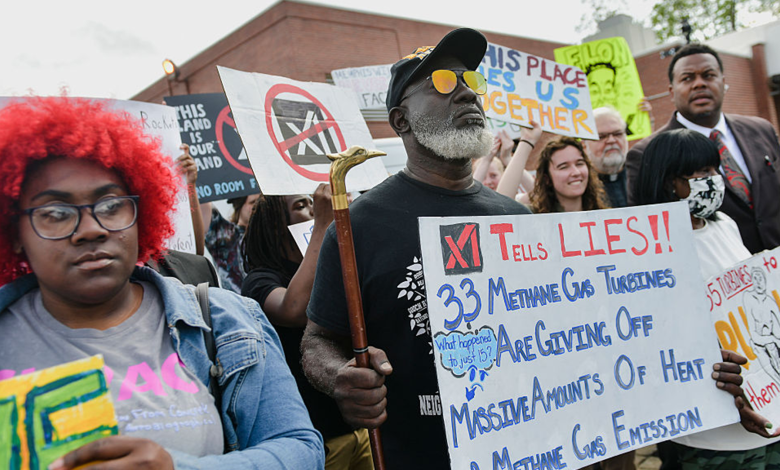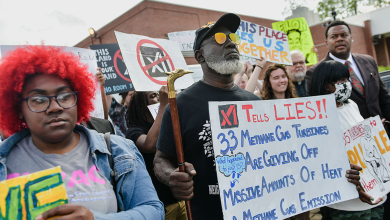Op-Ed: Could AI’s Growth Fuel Racism In Black Communities?


Editorial Note: Opinions and thoughts are the author’s own and not those of AFROTECH™.
The current and future benefits of AI have been mostly what is centered in conversations about the emerging technology, but recently, people have been bringing attention to what this may be costing people, especially Black and brown ones. We are all aware of how racism exists as it relates to systems, but you can also see signs of racism in the way environments are formed and how they are, or are not, tended to over time.
Prominent Black figures and organizations have recently been calling out how AI could affect Black communities. Billboard reported that R&B artist SZA stated her concerns about how much energy and pollution goes into running AI. She specifically mentioned Memphis, TN, where the NAACP has notified Elon Musk’s xAI with their intent to sue the company for the pollution it’s creating in the city, as reported by AP.
Environmental racism is not a new topic, but it has come to light more nowadays due to the conversations happening around how data centers could impact the places that we live. We have had examples of environmental racism within Black communities for decades. Warren County, NC, back in the early 1980s, was the birthplace of the environmental justice movement that we are seeing today, according to North Carolina Health News.
In 1982, Black residents of Warren County protested against allowing contaminated soil to come into their community to create a landfill because it would contain polychlorinated biphenyls (PCBs), man-made organic chemicals that are hazardous waste and dangerous to human health. That’s because they can suppress the immune system, contribute to cancer, and cause other harm. The chemicals also do not break down easily and tend to stay in the land, air, and water for years if not decades.
Unfortunately, the site was still built, but community efforts did lead to some positive results, such as a study in 1987 from the United Church of Christ’s Commission on Racial Justice, which helped to confirm the relationship between race and hazardous waste site construction.
I believe we will see that similar studies have to be done to show the relationship between data center placement and race. Although Warren County was unable to stop the construction of the landfill site, it helped another group taking a company to court for looking to bring a landfill in their community.
Bean vs. Southwestern Waste Management Corp. took place in 1979 and is recognized as the first environmental justice lawsuit. Black residents in Houston sued to block the construction of a landfill, arguing that it would be a form of racial discrimination. Ultimately, their injunction was denied but showed that with the right kind of organization, communities can use the courts to try and protect themselves against companies that are looking to bring chemicals to their neighborhoods.
Those stories from decades ago show us that environmental justice has been a topic in the Black community, but a more recent case of it brought national attention to a small city in Michigan.
The Flint Water Crisis came about in 2014 due to the Flint, MI, drinking water being temporarily switched to the Flint River from Detroit’s Lake Huron. The switch was made during construction on a new pipeline to source from Karegnondi Water Authority and had reportedly been a cost-cutting measure made by Michael Brown, an unelected emergency manager for the city. Unfortunately, the Flint River water corroded untreated lead pipes in the city, which led to widespread lead poisoning, among other health issues, within the predominantly Black community of Flint.
What we have seen with the Flint Water Crisis is how slowly state and local governments can move when it’s time to fix problems within certain communities. It started in April 2014, and only this year, as reported by PBS, has the city put in the required 11,000 replacement pipes that a 2017 court decision required them to do to remove the lead that contaminated the drinking water.
Social media helped bring attention to the issue, but there was a little girl who also used her voice to bring awareness to the crisis. Amariyanna Copeny, also known as Little Miss Flint, started her journey into activism when she was only 8 years old. She wrote a letter to President Barack Obama about the Flint water crisis, and her letter spurred Obama to come to Flint in 2016 to see the damage up close himself. That visit put global attention on what was happening in Flint, and Obama ended up authorizing $100 million from the federal government to help combat the problem. I can see a world where AI leads us down a similar path where one day we have to rely on the federal government to fix issues that come from the building of data centers across the country.
This is not solely due to private sector investments but political policies as well, because President Donald Trump has been pro-deregulation since his previous presidency and is planning to keep that going during his current term.
The Environmental Protection Agency, or the EPA for short, announced earlier this year that it would be embarking on the greatest deregulation period in American history. With the incentives at play for AI on a global scale between the United States and China, I do not see governments on a local, state, or federal level doing much to assess the potential harms of data centers before they are built.
As reported by Politico, we are already seeing complaints of data center construction obstructing the air quality within Boxtown, a predominantly Black neighborhood in Memphis.
What I would recommend for communities anticipating data centers coming to their town is to engage at the local and state level via organizations or to organize themselves with others to make sure concerns are heard and considered. We have seen organizing happen in Memphis where, as reported by CNBC, Elon Musk’s xAI plans to build gas-burning turbines to power Grok, its AI supercomputer.
Organizing does work, so communities may need to organize to reduce the impacts of AI.




